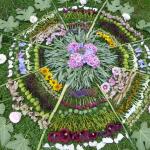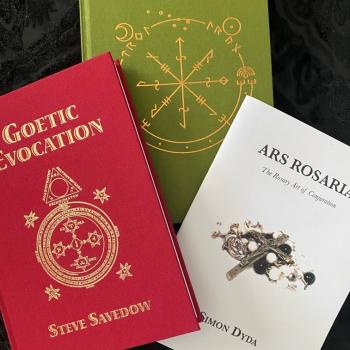 Ring of Brodgar, Orkney Islands. Pixabay.
Ring of Brodgar, Orkney Islands. Pixabay.
The Orkney Islands lie off the coast of northern Scotland in the waters where the North Sea and Atlantic Ocean meet. Less than one third of the 70 plus islands are inhabited with a population of less than 20,000 people. The indigenous cultures of the Orkneys were assimilated into the culture of the Northmen who settled the island in the 8th and 9th centuries. Like much of Northern Europe it was a stronghold of pagan tradition kept alive in local folk customs, and even when Christianity reached its shores much of their beliefs survives in the oral traditions of the Orcadians. It wasn’t until the Protestant Reformation that Christianity really took hold. The Orkney Islands are still a place of magic and mystery. Ghost stories, fairy tales and the paleolithic sites that are scattered across the landscape provide a fertile environment for the survival of the magical world. The island retained its reputation as a haven for witches survived into the 19th century. Spae-women were also common across the island, practicing their healing arts and using pagan charms, they were revered by the local community and feared by outsiders.
The island was also thought to be inhabited by a number of other worldly creatures, including various races of faeries. The finfolk as they were known, were dark. amphibious creatures capable of shapeshifting. They were sorcerers who had powers over the sky, sea and storms. Unparalleled in their boating skills, the finfolk lived part of the year in an underwater world and the rest of the year in the magical Hildaland, which coexisted with the physical world.
 19th century Odin Stone Sketch. Wikimedia Commons.
19th century Odin Stone Sketch. Wikimedia Commons.
Odin in the Orkney
The Norse people who settled the islands had a major influence on the history and culture of the Orkneys. Many of the islands are named using words from Old Norse. Norse religion combined with local folklore creating the current cosmology. Tales of elves, dwarves and other figures from Norse mythology can be seen throughout history. In particular references to Odin, the Allfather, are abundant in Orkney. Many place names refer to him such as Odinsgarth, Odiness, and the famous Odin Stone.
The Odin Stone was a well-known megalithic site on the Mainland, Orkney’s largest island. This holed monument was part of the megalithic complex in the parish of Stennes. It is thought to have been erected in 3000 BCE and stood 8 feet high and 3 feet wide, with a large hole carved through its interior. While the monument itself is no longer there, archaeological discoveries of socket holes in 1988 reveal the original place of the stone just north of the stone circle of Stennes.
The stone itself stood for thousands of years until it was destroyed in 1814, by a Christian “ferrylooper” or non-Orcadian who came to the island. Annoyed by the local people who came on his land in order to visit the stone, the accursed Captain C. Mackay will always be remembered for destroying this irreplaceable monument. A widespread tradition of practices grew up around the Odin Stone and surrounding complex. The most well known of these practices was the Odin Oath or “Aith o’ Odin” which was an unbreakable pact often used for weddings and other promissory ceremonies of importance. The couple would link hands through the hole in the stone before taking their vows. Other rituals were focused around the orifice of the monument, such rituals involved passing infants through the stone to bless them with vitality. Individuals would also stick their heads through the stone to acquire healing for their illnesses. It was also customary to leave offerings of food and ale at the sight. One ritual in particular known as the Freeing of Eynhallow was recorded in detail. It centers around a farmer who approaches the Odin Stone over nine consecutive full moons at midnight to petition for the power to see the magical home of the finfolk, in order to rid the island of them.












